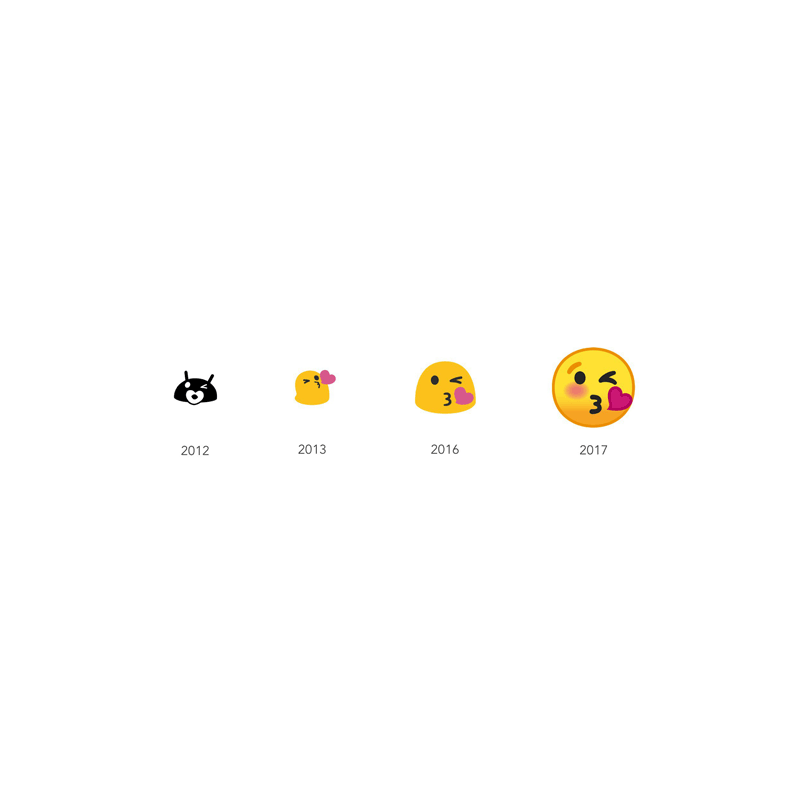
Brands need unique characteristics to differentiate themselves from others. From the biggest thing to the smallest, they should all able to represent a company using their own ways.
The same goes with Google with its emojis.
At the moment of introduction in 2013 alongside Android 4.4 KitKat, Google was having that 'weird' blob the company called emojis. Some users love them because of their weird but distinguishable looks, while some hated them because they tend to create miscommunication when used across multiple platforms.
It was between 2014 and 2016 when not just smilies, but all human-like figures were having that famous blob looks. The appearance is just one of the ways for Google to differentiate Android from Apple's iOS and any others.
2016 onwards, the blob emojis started to lose their blobbiness appearance as Google made them more like gumdrops. And after Unicode introduced genders and skin tones for human emojis, the blob emojis were starting to see their end.
In Android O, the successor of Nougat, Google again redesigned each and every emojis it is having. This time, the blob is no more. Google made it similar to the standard yellow emojis that are cross-platformed, but with higher detail in designs.

According to Rachel Been, Google's creative director on the Material Design team:
Not just Android O, Google said that Android users will have the ability to update their old emojis to the new ones without having to upgrade their Android version. This will allow cheaper Android devices that don't receive updates because of hardware limitation, or due to Android's fragmented ecosystem, to continue to see all the emoji available for their platform.
But again, because Android is the operating system of choice for many smartphone vendors, not every device is affected by the change. A number of manufacturers, such as Samsung and LG, are replacing Google's emojis with their own.
